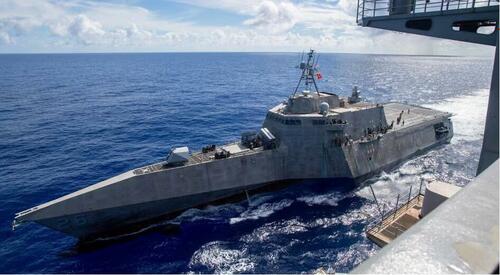Philly Shipyard’s Transformation: How Hanwha’s Investment Is Driving U.S. Navy Readiness
By Wilson Beaver of Heritage.org
Earlier this year, Hanwha Ocean Company bought Philly Shipyard for $100 million. Though it was met with little fanfare from the public at the time, the investment was a big deal in the Navy.

It came after requests from American defense experts and government officials for shipbuilders from allied countries to invest into the worn down, depleted, and inefficient mess that is the US shipbuilding industry. Navy Secretary Carlos Del Toro even called the deal, “a game-changing milestone” for America’s “Maritime Statecraft.”
Now, the new partnership is paying dividends, for Hanwha, Philadelphia, and the United States. In late August, Hanwha secured an annual Navy maintenance, repair, and overhaul (MRO) contract. That contract and the new work at Philly Shipyard will go a long ways towards fixing the Navy’s current maintenance backlog, which is currently contributing to both shipbuilding delays and cost overruns.
According to a 2022 Government Accountability Office report, the Navy’s current maintenance backlog amounted to $1.8 billion. This inefficiency has a major impact on America’s combat readiness has contributed to the Navy’s decision to decommission 9 ships before their expected service life.
Unfortunately, things have only gotten worse under the Biden-Harris administration. Misguided spending priorities and a lack of urgency have set back America’s ability to keep up with and deter China, which is the world’s largest Navy numerically and whose fleet is still growing fast.
Hanwha could help turn the tide in that fight, though. With the purchase of the Philly Shipyard, it is now positioned to compete for contracts for building new ships, which could be an enormous windfall not only for Philadelphia workers, but also our naval power.
Specifically, the Philly Shipyard is well positioned to compete for contracts to construct Constellation-class frigates. Currently, these ships are only being built at Marinette Marine in Wisconsin, with the first ship set to set sail in 2029 following production delay. But Navy leadership has already called for an increase in the construction of new missile-guided frigates, and the Philly Shipyard is now well-positioned to compete for building these additional frigates.
The new investment in the Philly Shipyard is a refreshing step in the right direction. It is also a reminder that our efforts to reshore industry and rebuild our defense industrial base will benefit American workers first and foremost, like the new workers who will need to be hired as Philly Shipyards expands.
If we want to win, however, we need to build on this positive momentum. Policymakers should work to create maritime prosperity zones, implement programs to solve labor shortages, and cut down on overregulation in order continue to promote further investments in and expansion of our naval infrastructure, especially at Philly Shipyards.
As our Navy works to meet the challenges of tomorrow, Hanwha’s new investment means Philadelphia will be playing a leading role in the fight. By fixing the maintenance glut and building new ships, Philly Shipyard will be vital to preserving the security of the American people.
Why? Because the first battle of the next great power competition will not take place in the far-off seas of the Pacific; it will be fought in places like Philly Shipyard on the Delaware as we set out to defeat our own deficiencies. And this is a battle we can’t afford to lose.
Tyler Durden
Mon, 11/04/2024 – 17:40

